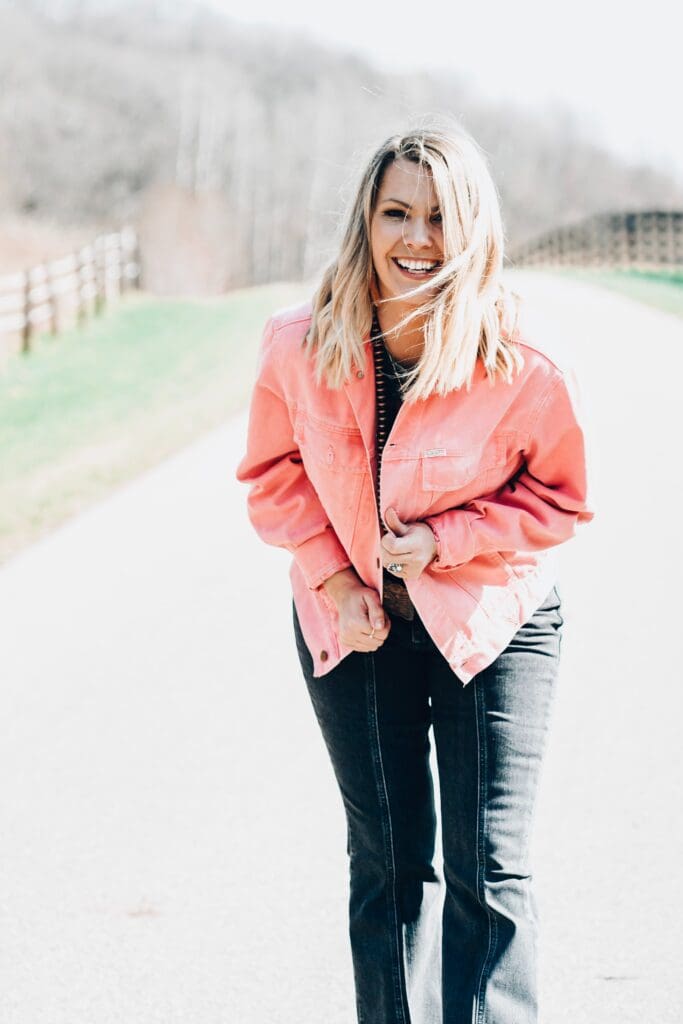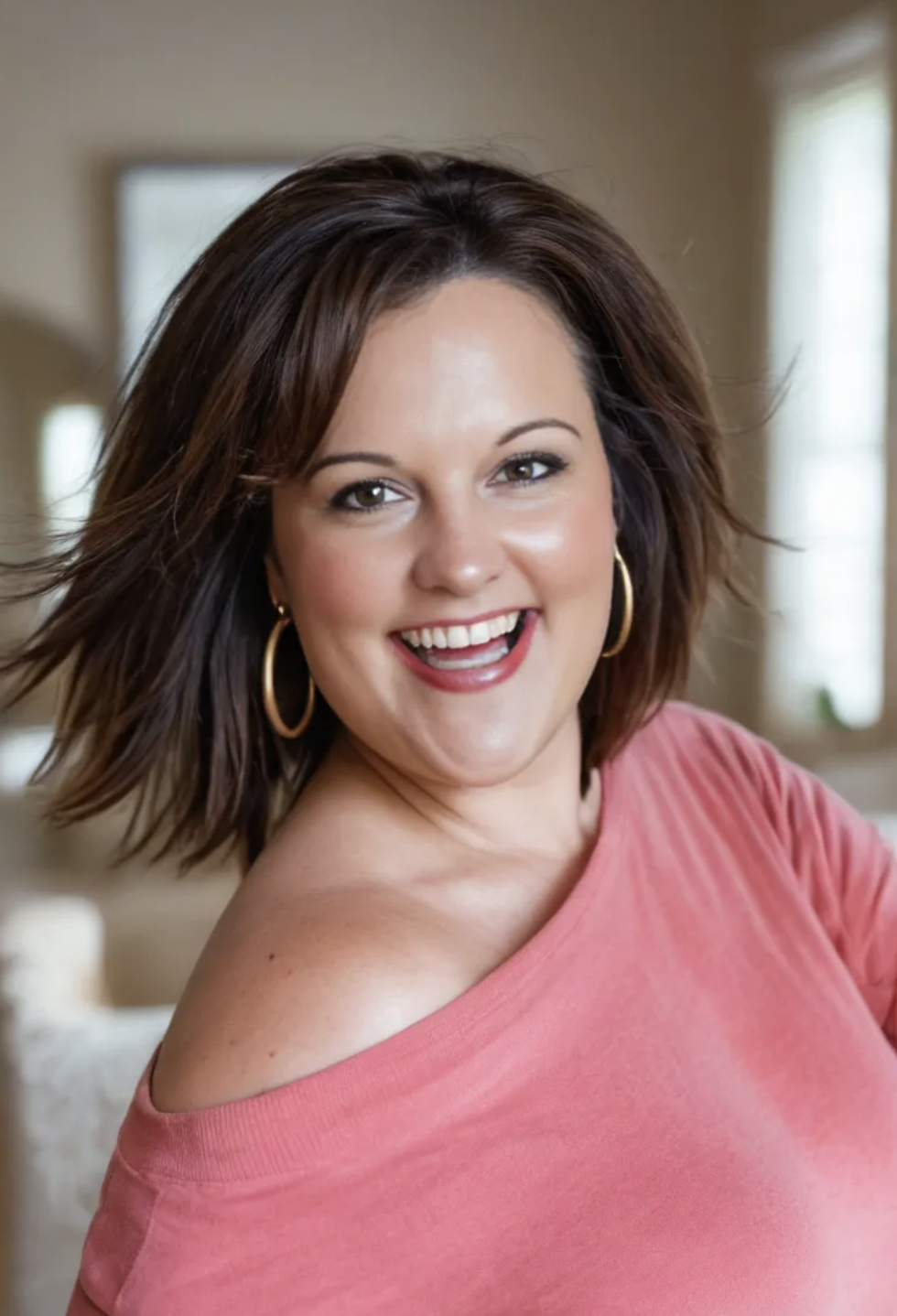Are you ready for the million-dollar question we all want the answer to? How do you build your business with organic marketing content?
Today, I am collaborating with Ashley Alderson who is sharing her 3-ingredient recipe to create 6 essential pieces of content that builds community and drives sales.
Understanding the core ingredients of a marketing content strategy
Ashley notes that everyone who has a product to sell really has these six pieces of content in common.
And she looks at it as a three-ingredient recipe that all of us need to think about in marketing, and that is
- Branded content. So, show the behind the scenes and tell the story of the brand.
- Sales content that actually sells the product, shows how to use the product, talks about the promotion or the event, and gets people to take action.
- Engagement content. The things that simply are meant to stop the scroll, get people to watch a short video, even if it has nothing to do with my product, it’s just getting people to click. And that is really the catalyst to starting community.
So, if I start with that recipe, what does that look like on a weekly or daily basis?
Live Content: The heartbeat of your marketing content strategy
So, the first is every single week as you’re looking at your marketing content strategy, I would start with live content.
Live content is a non-negotiable for Ashley.
If she’s working with a company, live has to be a part of their strategy.
Even if the owner’s scared, everybody starts scared and everybody starts scared.
Everybody says, I don’t want to be on camera.
I’m going to look like a fool.
Where do I even begin?
But the thing about live is it humanizes your brand in such a beautiful way.
It gives you an opportunity to be human and build a relationship with the person on the other side and being a human doesn’t mean being perfect.
It means being real and vulnerable. And if you kick over the ring light in the process, people are going to love you that much more for it. So, screw up as much as you want. Your engagement’s actually going to go higher the more you screw up.
So live is great for that human connection, but then also just for the notification’s sake. It puts you at the top of the feed. It drives notification, gets you in the top of Instagram, gets you notifications on TikTok.
So, it doesn’t matter where you’re going live, but you’ve got to get there.
And it has to be where your customers are naturally. You don’t have to be everywhere. But you have to be where your customers are going to be.
Short form video for your marketing content strategy
The second content piece goes hand in hand with the lives and it’s probably going to be one that’s going to work your way into the lives, and that’s short form video.
Short form video is the number one most consumable piece of content across all platforms.
Ashley shares that she loves short form video because it’s so reusable.
So, if I’m creating content for Instagram and I’m creating an Instagram reel, then of course, I’m going to reuse that on TikTok and on Facebook and YouTube Shorts.
Don’t forget about YouTube Shorts and Pinterest.
Pinterest is video friendly now.
So, you can create something one time, and use it in five different places, which is huge.
So, what kind of short form content should you make?
Kind of like that earlier content recipe, it’s going to kind of fall in all three of those buckets.
So, there’s the content that’s around the brand which might be like
- A day in the life of
- Get ready with me
- Introducing your staff
- Product creation
- Ship an order with me.
Or it might be the sales content.
- Buy this
- How to wear this
- How to use this
- Here’s a promotion that I have going on. Like, here’s the actual products.
And Ashley can’t stress this enough – when a retailer is shopping from a wholesale brand, they desperately need that short form content on how to use this product and what makes this product special, not only to re pitch it to their customers, but also to train their internal staff.
Because more often than not, a retailer will go to market or they’ll shop online and they’ll order something because they saw that content. And they’re like, oh my gosh, this candle is so unique because of blah blah blah.
But then when the staff receives the order in the retail store, they actually just open a box and they’re like, oh, it’s a bunch of candles. And they don’t know any different.
So, making sure your retailers are trained using that short form video is really helpful.
And then the third way to use that short form video is the engagement content.
You might not want to shake your booty on TikTok, but certainly you can create something on TikTok that’s just fun and engaging and its brain candy.
And again, you’re just trying to stop the scroll. You’re not trying to sell anything with that engaging content.
The third piece of marketing content is your product photos
It’s really easy to get on the hamster wheel of here’s what’s new and forget about older products.
You have a bunch of unsold inventory that you also need to get rid of.
You don’t need just what’s new, but you need what’s awesome that I still have access to.
So, those product photos that I’m planning to promote every single week, it’s got to be both.
What’s new and what’s aged and just needs to be re shown in a different way.
So, this is also photo quality. If you’re going to put your products out online, it’s got to be well lit. It’s got to feel on brand and a little bit elevated.
People are buying from you because they have the idea that you’re going to help take them and their customers up a level in style.
And if your photos are of a lesser quality and they’re dark and dingy and blurry, you’re going to feel like you’re shopping at Ross. And that’s not who you’re trying to attract.
So, make sure you’re going through for like that Anthropology vibe and not the Ross vibe. So, the photo quality is absolutely critical.
A really good investment that will come back and provide a really great return on investment is outsourcing your product photography.
Entrepreneur vs CEO mindset
We are often trying to do everything and get scrappy, trying to do everything ourselves, especially when we’re first starting out.
But sometimes making that investment and outsourcing things can really come back tenfold because we’re getting a higher quality product or service, and then we can really shine and charge more.
Do what you do best and hire the rest.
It’s not worth really spending a bunch of time on something that you can do so so, or you can kind of do well and maybe kind of enjoy it.
Chances are if you’re only so so at it and you don’t really love it; it’s not going to have the outcome that you want.
You’re better off to focus all of your time and energy in that CEO mindset of doing what you love to do. And then hiring people around you to support you with all the rest.
Driving engagement through quotes and memes
Do quotes and memes sell products?
No, not really.
But do they build community? Absolutely.
Do they build a relationship? Absolutely.
Will they stop this role? Absolutely.
So, when you’re thinking about planning out social media, the number one question you should be asking yourself is what are my customers engaging with?
And if you look across your analytics, chances are they’re probably going to engage with your quotes and memes more than they are your product photography.
So, the idea is how do I build engagement, build reach, get people clicking and engaging, and then the next post I make is my new launch, or it’s my products or whatever, but we have to keep the engagement train rolling to show them what I’m going to be selling right after that.
So, it’s gamifying this idea of how much reach can I get from this content?
The quotes and memes are important to sprinkle in your content every single day and when you’re picking what quotes and memes, you’re going to share it can’t be fluffy crap.
You’re not reposting something that’s like happy hope day. Right? No, nobody cares.
So, it has to be something that either you don’t know how to say yourself, like you don’t have the words to say it yourself, or maybe you’re not brave enough to say it yourself.
Sharing your personal stories
People want to do business with people.
They want to know the human behind the brand.
So, when you’re thinking about who’s your ideal customer and granted in wholesale, when you’re selling to retailers, you can kind of narrow this demographic down a little bit.
But if I’m selling to a demographic that I know, man, they’re business owners, they’re busy, a lot of them have kids, they’re balancing all these different things in their life, they don’t have a lot of time, well, what would they engage with?
Probably questions about time management or what kind of crock pot or air fryer recipes have you been loving lately?
Or, questions that you can then turn into a story or just a behind the scenes, like what happened to you this week?
Crafting product collections
Ashley views collections as a way to solve people’s problems, and that’s really just the secret to sales is solving someone’s problem.
And so, in a retail location, I would be looking at, again, that calendar of what’s coming up.
Oh, Saint Patrick’s Day and Mother’s Day and graduations and, you know, it’s Christmas. I need gifts and gift collections.
The retailers have to sell in collections to solve people’s problems.
So, for example here’s my Saint Patrick’s Day collection. Here’s my Mother’s Day collection, whatever it might be.
Or it might be product focused.
So, how can you take your products and make it a recurring revenue product, build it into a collection?
And, yeah, it might be seasonal, but building something that solves a problem for the retailer and gets them an opportunity to sell in bulk.
Now we’ve talked about all the six pieces of content. So how do you see them working together to create a really sustainable engagement and consistent sales strategy?
Does this sound familiar?
As a business owner, you’re so busy wearing so many hats and sometimes you wake up and you’re like, oh, shoot. It’s Thursday. What am I going to post on Instagram today? Or, I should make a TikTok. What am I going to make today?
So, all about preplanning.
Ashley shares she’s sort of nerd, and has this big spreadsheet that she really loves to use.
And she builds it out of necessity because she was completely overwhelmed creating content.
She has the six pieces of content in columns in a spreadsheet. And when she’s in a creative mood, which isn’t always, but when she is, she will just brainstorm all the things she could be doing.
She lays them out in her columns, so she always has something to pull from.
And then the other tabs on the spreadsheet are all date focused.
Ashley plans out content by the month.
The first column in the spreadsheet is all the days of the month all the way down. And then across the top row is all the different channels that they’re active on.
And if she is going to post three times a day on Instagram or Facebook, then she has three columns, one for each time she is going to post.
Then once a week, she can sit down and look at the spreadsheet and go, alright; from these six pieces of content, I can plug it all in.
I put it all in black in the spreadsheet across all these different places. And then once I’ve got it kind of planned and I’m like, alright. I know I’m going to launch new arrivals here, I’m going to drop this collection there. I’m going to remind about this older stuff that I need to restyle, reshoot, repost, throughout the week. I’m going to go live on this day and this day.
It’s all laid out.
Emails are laid out with this content supporting the content.
Then go in andpreschedule as much of it as you can.
And then boom, 90% of my content’s all knocked out on a Monday.
And if she’s feeling really creative, she can maybe get a month down the road.
Surprising trends in product-based businesses
In Ashley’s opinion, pre-2020, wholesale was kind of like a behind the scenes thing.
The consumer, maybe knew a couple of the big brands they were buying from, but for the most part, really didn’t know where the product was coming from.
And 2020 changed everything because everyone had to start using video in a whole new way.
And so, the trend I’m loving is seeing these retailers and these wholesalers completely collaborate and go live together.
Or the wholesaler is going live on the retailer’s page and they’re running ads to it, and they’re just preselling all of these products before the retailer even places the order.
They do go live, they presell everything, and then drop ship all of that to the customer.
So, I think that relationship of bringing the wholesale brand, the product maker to the forefront is new and emerging.
I think sometimes retailers used to look at that as risky because they were like, oh my gosh. Andee’s candles have been my hidden gem for so long, and now everybody knows exactly where I’m getting these from.
So, Ashley shares that is a bit of a scarcity mindset.
Abundance mindset is how much more is my customer going to love and trust me when they know exactly where these products come from?
How much more demand is there going to be for Andee’s candles when they see how awesome they are?
And I’ve been selling them over time and they can’t wait for Andee to come and go live with me.
There’s going to be that demand just sitting there and waiting.
And we’ve built trust in community, so I don’t really want to go somewhere else and look for this product.
So, that’s an abundance mindset, but that’s a huge shift that’s happening right now, for sure.
And tune in to the podcast to hear everything that Ashley and I chatted about when it comes to creating these 6 essentials pieces of content for your marketing content strategy.
Connect with Ashley
Website – http://theboutiquehub.com/
Instagram – @theboutiquehub
Instagram – @ajalderson

Ashley is the Founder/CEO of The Boutique Hub, connecting over 100,000 independent retail stores, ecommerce brands and the boutique industry worldwide. She’s an industry disrupter teaching business owners how to grow their business in community over competition, through their membership program, live events, and high level programs. Ashley is a wife, mom of three in middle and high school, lover of sarcasm, old lady basketball and all things horses.
Resources & Links
Be one of the first 100 to access the Product Marketing Bank here.
Check out my Faire Visibility Playbook course here.
Want to get my eyes on your Faire site? Book a 1:1 Site Audit here.
Ready to learn how to automate your backend wholesale workflow? Checkout Wholesale Growth Engine
Connect with Andee Hart @ She Sells Differently
🎥 Youtube
If you enjoyed this episode:
✅Sign up for weekly reminders so you never miss an update on how to increase your sales and optimize your marketing operations without losing the personal client touch.
You can grab free resources here: https://andeehart.com/resources
✅Subscribe to the She Sells Differently Podcast, where I deliver new episodes every Wednesday.

